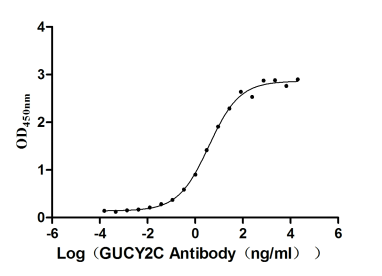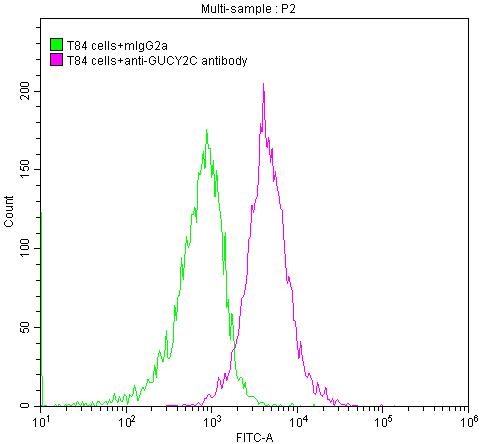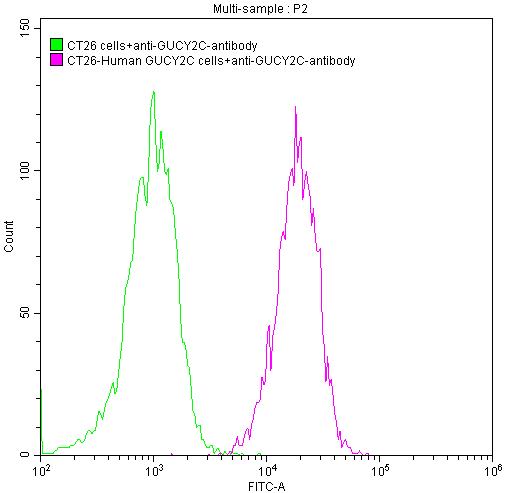The generation of the GUCY2C recombinant monoclonal antibody follows a meticulous and well-defined process to ensure its exceptional quality and specificity. It begins with the isolation of B cells from the spleen of an immunized animal, where the recombinant mouse GUCY2C protein is used as the immunogen. RNA is extracted from the B cells and converted into cDNA through reverse transcription. The GUCY2C antibody genes are then amplified using specific primers targeting the antibody constant regions and inserted into an expression vector. This vector is transfected into host cells, allowing for the production of the GUCY2C recombinant monoclonal antibody. After a period of cell culture, the antibody is harvested from the supernatant and purified using affinity chromatography, resulting in a highly purified form suitable for diverse applications. Rigorous characterization assays, including ELISA and FC analysis, are conducted to validate the antibody's specificity and functionality in detecting mouse GUCY2C protein.








